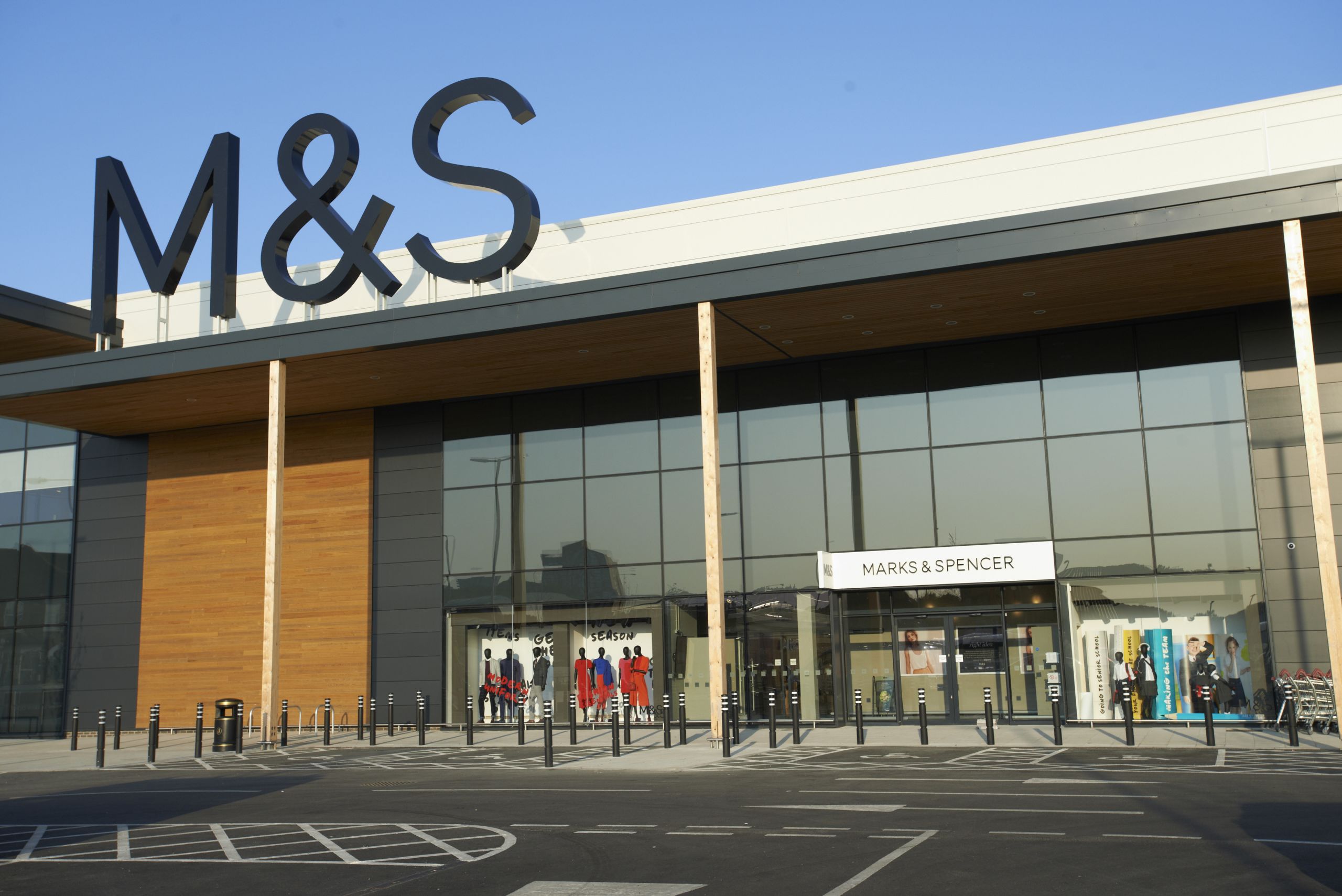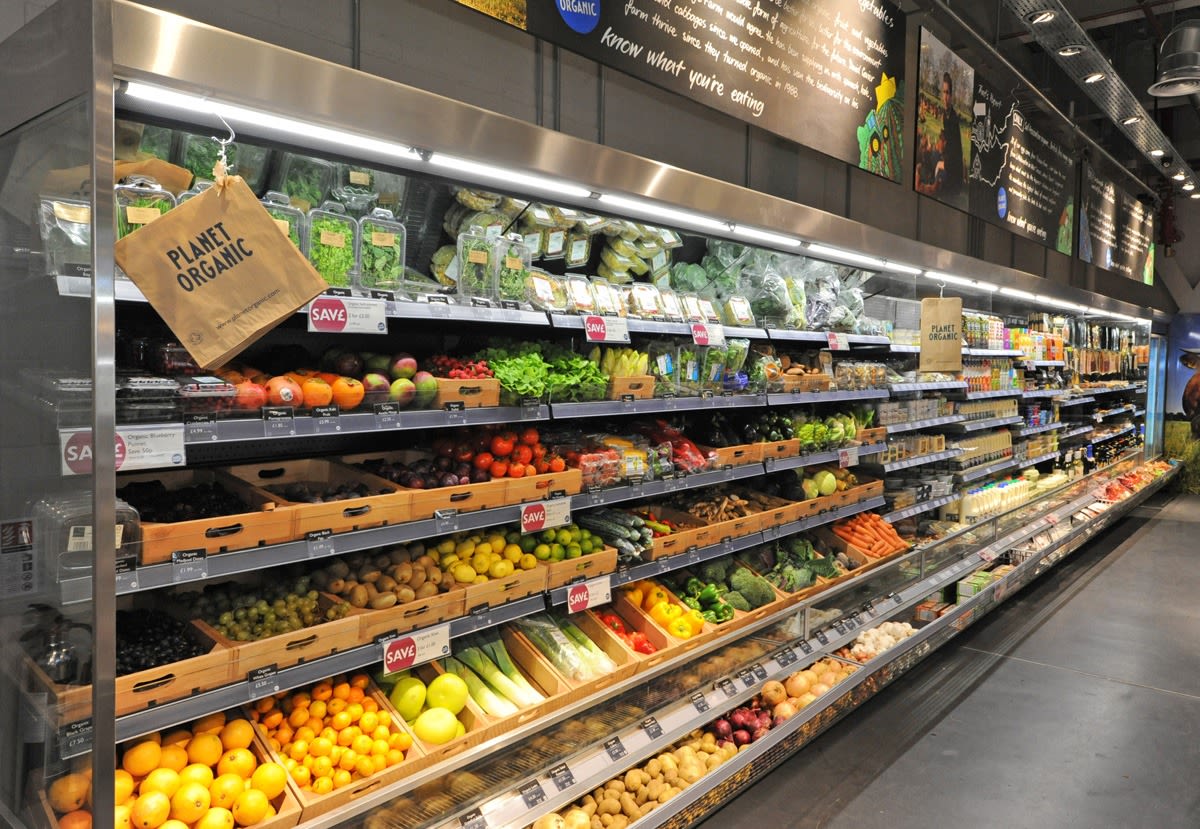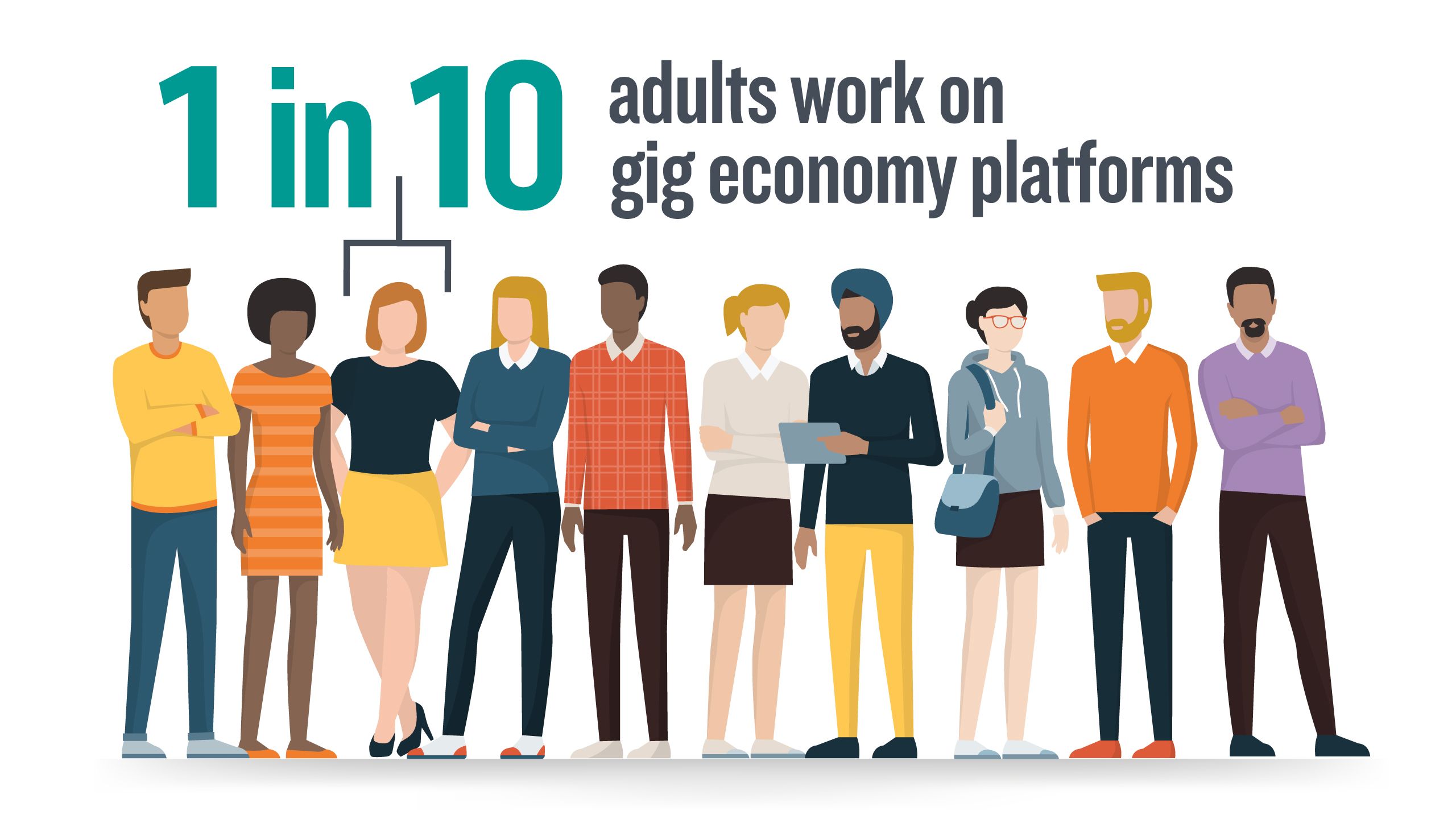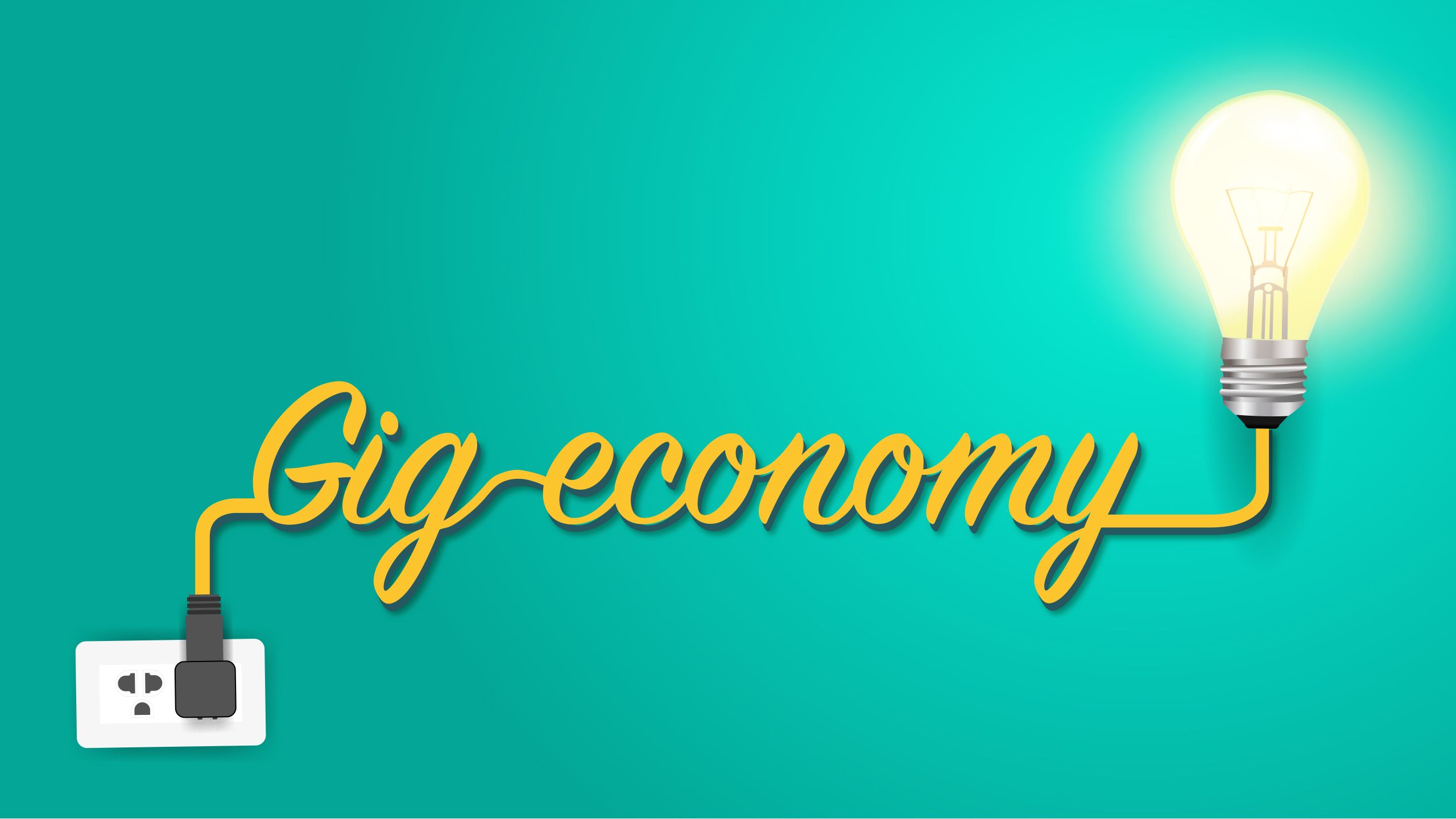2020: The year of the gig economy
How to use the flexible workforce to win the war for talent

Retail employment is changing.
The pool of directly employed retail workers is shrinking, and hiring problems are increasing as employees demand greater flexibility and control over when, where and how much they work.
The government’s August 2019 labour market commentary reported that the highest number of vacancies across the UK economy was in the retail and wholesale sector (133,000 vacant positions).
Similarly, the British Chambers of Commerce 2019 Quarterly Recruitment Outlook for April to June 2019 asserted that “recruitment challenges remain very high for firms in wholesale and retailing – sectors generally characterised by low wages”.
These changing market dynamics place additional pressure on retailers’ already strained operational margins. To keep up, retailers must adapt their labour force strategy.
One way to do this and combat staff retention and hiring woes is to look to the shared workforce.
The shared workforce is a labour market characterised by the sharing of current, former and prospective employees between sites within a business, or between businesses. By pooling casual staff resources through a shared workforce, employers have access to a larger and more flexible workforce, enabling them to better match labour to demand.
Latest figures show Britain’s gig economy is booming and now represents 4.7 million people working in flexible positions across all industries – from students seeking additional income to new parents looking for flexible job opportunities.
For retailers, the shared workforce can help reduce labour costs, increase productivity, manage seasonal peaks across their estates, support on delivering the experiential formats consumers increasingly crave and more.
So, should retailers look to embrace this revolution in how people work? What are the challenges? And is now the time for retailers to rethink their ratio of permanent to flexible workers?
This report by Retail Week, in association with Catapult, will cover:
● How the digital revolution of recent years is impacting workforces and frontline staffing
● What the gig economy and zero-hours contracts really mean for retailers and the true benefit to the bottom line
● The brands capitalising on shared workforces to cut costs and ramp up productivity
● How technology and training is changing who the frontline store associate of today needs to be – and how retailers can get in on the action.
Chapter 1: The workforce revolution
Staff churn represents a big problem for retailers today.
Forty per cent of UK retailers said they found it more difficult to retain staff over the past year, according to research from the Chartered Institute of Personnel and Development (CIPD) – 11% higher than for businesses outside the sector.
Meanwhile, 41% of all UK businesses said it had become tougher to fill vacancies against a backdrop of buoyant labour demand.
Alongside the recruitment and training costs associated with high staff turnover, and a loss of revenue due to gaps in staffing, the CIPD Labour Market Outlook Summer 2019 report found that 36% of retailers have increased salaries in response to the recruitment crisis.
This piles more financial and logistical pressure on bricks-and-mortar retailers, who are already feeling the pinch of reduced high street sales and profits .
For instance, an October 2019 study by Alvarez & Marsal and Retail Economics revealed that store-based profit margins at the top 150 UK retailers slumped by more than half during an eight-year period, dropping from 8.8% in 2009/10 to 4.1% in 2017/18.
Furthermore, the research showed that operating costs for bricks-and-mortar retailers have climbed by 10.8% since 2014, and retailers now have around 20% more store space than they can financially justify.
Yet the study also underlined that physical stores remain central to retail.
It found that bricks-and-mortar sales account for approximately 80% of all retail sales, while stores are hugely relevant for millennials who, despite their tech-first reputation, were found to value the high street more than older demographics.
For instance, the study reported that a quarter of 16- to 24-year-olds visit a flagship shopping destination at least once a week, compared with once every six months among 45- to 54-year-olds.
“We have already seen some high-profile casualties, and many more are on life support. But reports of the death of the high street have been greatly exaggerated”
Richard Fleming, managing director and European head of restructuring at Alvarez & Marsal, said: “Most of the UK’s biggest retail brands are in the midst of a fight for survival.
“We have already seen some high-profile casualties, and many more are on life support. But reports of the death of the high street have been greatly exaggerated.”
Bricks and mortar is clearly still vital for the industry, but with profit margins being decimated, how can store-based retailers survive and thrive as they head into the next decade?
Enter the shared workforce
The UK’s burgeoning gig economy presents retailers with a solution for frontline staffing by tapping into the shared workforce to save money while improving productivity and operational efficiency.
According to a 2019 study by national trade union TUC, Britain’s gig economy has more than doubled in size over the past three years and now accounts for 4.7 million workers.
This growth in gig employment, buoyed by demand from workers and employers seeking greater flexibility, can have a positive impact on retailers’ bottom lines.
By tapping into the shared workforce, retailers can cut costs and drive efficiency. In doing so, they can ensure they have the correct number of staff to cater for consumer demand at busy periods, such as Black Friday and the January Sales, as well as balancing staff needs at quieter times of year.
“Britain’s gig economy has more than doubled in size over the past three years and now accounts for 4.7 million workers”
While short-term, flexible and independent work is not new to the economy, it has become more accessible and cost-effective for both workers and employers, thanks to the advent of virtual marketplaces.
The digital revolution has provided virtual marketplaces for the on-demand peer-to-peer buying and selling of short-term flexible work, and has helped to drive the gig economy.
The TUC report underlined that digital platforms, such as Uber and Deliveroo, have played a pivotal role in the gig economy’s soaring popularity. It found that the number of UK adults who worked for an online platform at least once a week had risen from 4.7% three years ago to 9.6% today.
Commenting on the findings of the report, Justin Nogarede, digital policy advisor at the Foundation for European Progressive Studies, said “platform work is gaining in importance” and highlighted the scale of the gig economy, noting “our research shows high levels of platform work across Europe”.
With gig economy work becoming more prevalent, retailers can more easily avoid the increasingly competitive recruitment market – and associated recruitment costs – by tapping into the shared workforce pool.
Chapter 2: The true story behind the gig economy
The headline-grabbing gig economy boom has prompted a great deal of discussion within the industry. Does it improve workers’ lives or worsen them? Does gig work really benefit retailers or should they stick to traditional workforces?
The subject that has arguably garnered the most column inches is that of zero-hours contracts, becoming part of both political and economic debate.
In the run-up to the 2019 general election, Labour pledged to scrap zero-hours contracts in its election manifesto, while the Liberal Democrats promised to give zero-hours workers a 20% pay rise.
Zero-hours: separating fact from fiction
Otherwise known as casual contracts, zero-hours work has been slammed by critics, such as the TUC and Unite the Union, for a lack of employment rights and job security. Yet the results of government research, alongside regulations, present a different story.
A 2018 Department for Business, Energy & Industrial Strategy (BEIS) report found that 90% of people who use gig work as their main source of income were either fairly or very satisfied with their experience, followed by 71% of those who use gig work as an extra source of income.
Furthermore, 58% said they were satisfied with the independence of their work, while 56% were satisfied with the level of flexibility offered.
Those providing jobs outside of food delivery services were more likely to feel satisfied with the flexibility of their work; 75% of those performing other jobs said they were satisfied.
Significantly, the importance people attach to their gig economy work seemed to influence their perceptions of their experience and their conditions. Those who consider the income they earn from the gig economy to be important to their standard of living are more likely to be satisfied with the flexibility on offer; 76% in comparison to 56%.
“90% of people who use gig work as their main source of income were either fairly or very satisfied with their experience, followed by 71% of those who use gig work as an extra source of income”
Yet, despite these findings, it would be remiss to ignore the drawbacks and challenges of zero-hours contracts.
For the worker, there can be difficulty securing sick pay, as this is only a legal requirement for employers if the worker earns more than £118 a week minimum and is ill for four days or more.
However, that doesn’t mean that employers aren’t waking up to their other responsibilities and rethinking zero-hours contracts where sick leave is concerned. For instance, in May 2018, Uber introduced sick pay for its UK drivers in a bid “to demonstrate [that] it is a responsible member of the so-called gig economy”.
Outside of sick leave, there’s also the issue of pay as flexible workers are often paid less than permanent employees. The government research revealed that 25% of gig economy participants were either very or fairly dissatisfied with their work-related benefits and level of income.
There are also several on-demand apps and marketplaces that work with retailers to offer compelling rates of pay, along with traditional employment benefits such as holiday pay and pension. Catapult, for instance, offers workers between £8.75 and £12 per hour, which is above the national living wage of £8.21 for those aged 25 and over, as well as automatic holiday pay and the option to receive pension contributions.
Outside of pay, the research found that 23% of gig workers said they were dissatisfied with career development and training opportunities. Most of the gig economy workers surveyed said they hadn’t received any formal training and only had limited informal training, while career progression was also stunted.
To counter this issue, some gig economy apps and marketplaces are working with employers to provide online training.
Catapult has worked with footwear brand Clarks to develop an in-app sales training module that its flexible staffing candidates must complete before starting work at the retailer. The flexible workforce app also offers candidates the ability to take health and safety, first aid and other courses free of charge.
With the Recruitment & Employment Confederation recently lobbying the UK government to broaden the apprenticeship levy to include flexible workers, free training like this is going some way to help address the lack of education for this section of the workforce.
So, what does this all mean for retailers?
For retailers, the shared workforce helps shore up the bottom line.
Shared workforces slash recruitment costs and empower employers to meet customer demand. This is especially useful for retailers managing seasonal peaks, filling unexpected staff absences, launching pop-ups and special in-store events, and testing new store services.
With a zero-hours contract, employers don’t guarantee the worker any number of hours, meaning retailers won’t lose money on frontline staff they don’t need during quiet periods.
However, it is a two-way street: zero-hours staff don’t have to work the hours retailers may request at busier times. This is where shared workforce platforms prove their worth, by offering retailers easy access to a vast pool of vetted and trained staff.
It’s also worth noting that some on-demand staffing apps offer flexible employees by using worker agreements instead. For instance, Catapult’s Worker Agreements enable flexible retail and hospitality workers to get paid weekly and earn holiday pay as they go. Agreements like this are arguably better for workers as they make them less reliant on one employer for their income.
By using an on-demand platform, the worker can spread their employment across the year and across companies, therefore increasing their income security – representing a win-win for retailers and workers.
Chapter 3: The store associate of today
Once upon a time, store associates were firmly planted behind checkout counters or consigned to stocking shelves. Business decisions were typically made from head office, and frontline staff were often seen as little more than cogs in a huge machine.
While this is still how some businesses operate, the shifting landscape of bricks-and-mortar retail – from experiential formats to self-checkout stations – has prompted many retailers to review how their frontline staff can add the most value for customers.
From B&Q to Samsung to Ikea, brands are building teams and empowering them with tech infrastructure, alongside upskilling and training, to attract customers to their stores and better engage and retain the people that work for them.
B&Q, for instance, launched its small-store concept GoodHome in Wallington in April 2019. To make a purchase, customers can use in-store digital screens or click and collect through the B&Q app.
While there are no traditional checkout roles here, customers receive expert advice on DIY projects from a team of 10 frontline staff, referred to as ‘enthusiasts’, who occupy a sales area of just 1,615 sq ft.
Those who want to purchase without speaking to staff are able to do so, but the enthusiasts support customers looking for expert advice that cannot be accessed through a website.
John Colley, chief trading officer at B&Q parent company Kingfisher, says the project is “catering for customers of the future”.
Meanwhile, Ikea has also launched its own smaller formats, including order and collection points, and its first two Planning Studios in London – one on Tottenham Court Road, launched in 2018, and the other in Bromley, opened in 2019.
The frontline staff at these studios have been trained to provide customers with advice and inspiration on kitchen and bathroom interiors.
Samsung has also made headway when it comes to reimagining the role of the store associate. Samsung KX – located in London’s Coal Drops Yard – opened its doors in July 2019, waving goodbye to the traditional shop concept.
The space combines pop-up events, tech innovations and a sales floor. Samsung asserts that its frontline staff are selected based on their passions, personality and skills, eliminating the typical focus on sales targets.
The value-add at these smaller store formats is clear. To achieve this vision, frontline staff must be trained to use the digital tools available to help them support customers and be empowered to offer expert advice on products.
Offering training and education to store associates isn’t just beneficial for customers and workers, either; it can help to increase staff output and boost business’ bottom lines.
For instance, research from Gallup showed that, as well as lower turnover, engaged teams have 21% greater profitability, 17% higher productivity and 10% higher customer ratings than disengaged teams.
Anna Blackburn, managing director at jewellery retailer Beaverbrooks, has been on a mission to upskill frontline workers and increase store manager accountability.
Speaking to Retail Week in August 2019, she said she believes empowered, accountable teams “produce higher levels of engagement and better results”.
“Engaged teams have 21% greater profitability, 17% higher productivity and 10% higher customer ratings than disengaged teams“
And Blackburn isn’t alone in her thinking. Retailers such as Marks & Spencer have been boosting store-based accountability by localising decisions and responsibilities previously held by head office.
Earlier this year, Marks & Spencer announced it was waving goodbye to the “head office knows” mentality in a bid to “bring back the voice of the store”.
This included handing managers the authority to make trading decisions, giving them sight of their own profit and loss account, and providing food waste management information. Store managers also lead Monday morning trading feedback calls, with the effects of the decisions made in that meeting visible in stores by 5pm the same day.
Speaking to Retail Week in August, Jo Moran, Marks & Spencer’s head of transformation for stores and property, said: “Over the past few months at M&S, we’ve started to rekindle what we call the voice of the stores, which had become disconnected. Doing this is all about putting the customer back into the heart of decision making.”
There’s no doubt that educating frontline staff is key to ensuring bricks-and-mortar stores stay relevant. But where retailers are cultivating a flexible, shared workforce, they should build in a plan for training and upskilling flexible staff, too.
Failure to do so could leave flexible staff feeling undervalued and disengaged, leading to a loss of productivity and profit, and a potential drop in overall employee morale.

How M&S is building a shared workforce
Marks & Spencer employed 20,000 flexible workers across Q4 2018 – almost a quarter additional staff to the number of permanent employees it had at the time (80,787).
It has also refocused who the store associate of today needs to be by placing an emphasis on recruiting hard-working, customer-focused people over those with retail experience.
Commenting on its flexible staff recruitment in October 2018, M&S retail, operations and property director Sacha Berendji said: “Retail experience is helpful, but what we’re really after are colleagues who are ready to be part of a hard-working team and help make every moment special for our customers.”

Chapter 4: Meet the retailers embracing the shared workforce
Several UK retailers are already capitalising on the changing shape of the UK workforce.
From Planet Organic to Clarks, brands are building flexible shared workforces to boost their bottom line. Here’s how.
Planet Organic
While seasonal flexible staff are a popular option for retailers, British supermarket chain Planet Organic has used flexible staff to free up its store managers’ time all year round.
Engaging a flexible workforce has allowed the retailer to drive “strong sales productivity” and considerably reduce its fixed labour costs.
The supermarket says it began using flexible staff after struggling to fill vacancies and losing staff due to them feeling “overworked”. It found that by bringing in flexible workers through shared workforce app Catapult it was able to reduce the time its managers spent recruiting part-time staff.
The company’s approach was piloted in three London stores, with flexible workers covering three- to four-hour shifts in its food-to-go areas, alongside working on tills.
Nic Porter, Planet Organic’s head of human resources, explained: “You’re splitting that role out by saying someone from a shared workforce app can do 4pm until 9pm in the evening, without having to hire that extra person.”
Porter estimated the cost for Planet Organic hiring one team member at around £870, but said that using a flexible workforce allowed the company to slash recruitment costs and free up time.
For instance, Planet Organic reports that, at its Tottenham Court Walk store, using flexible workers resulted in a 50% reduction in staff turnover within six months of implementation.

Clarks
Shoe brand Clarks has built a high-performing flexible workforce across its retail portfolio, supported by shared workforce app Catapult.
Clarks started using Catapult in July 2018 to address daily and weekly peaks and cover unexpected events.
By recruiting a shared workforce, Clarks intended to smooth out the gaps between over- and understaffing, while simultaneously optimising performance.
Supported by the app at its busy Regent Street store, Clarks was able to fill 100% of the shifts requested by its store managers in July, with flexible workers representing 20% of its part-time staff for that month.
On the back of these net gains, Clarks has looked to expand its shared workforce across a further nine stores with Catapult and is exploring how it can maximise it at a national level, focusing initially on stores in major UK towns and cities.
Discussing the benefits of the shared workforce for its business, Caroline Scott, Clarks’ regional sales manager for the north, said: “We initially set out with Catapult to help bring flexibility into staffing our West End stores with good-quality sales advisors.
“We are now seeing evidence of wider benefits than simply ‘flexing up’, including strong sales productivity and reduced labour costs. It’s a very promising start.”
Lee Geraci, Clarks’ store manager for Marble Arch, echoed Scott’s comments: “The calibre of people is great. They know what to do and get on with it straight away.”

Amazon
Amazon used a bold approach for its staffing strategy across Q4 2018.
Reporting its staff make-up, the digital giant said it employed 250,000 permanent workers in the US and 17,000 in the UK. On top of this, it hired an additional 100,000 flexible workers in the US and more than doubled its UK workforce by hiring 20,000 flexible workers.
The retail giant uses these flexible workers to boost its productivity levels and increase its output over seasonal peaks.
Speaking to Retail Week, an Amazon spokesman explained how it leverages a shared workforce: “An Amazon product goes through several processes between arriving at a fulfilment centre (FC) and being sent to a customer, including stow/pick, pack and shipping. The way our buildings operate, and the speed at which we work, does not change in our busiest period of the year.
“We are able to fulfil more customer orders by having more people working with us. For example, Tilbury FC in Essex, the largest Amazon site in the UK, has around 2,500 permanent employees, which increases by around 1,500 people over the Christmas period.”
The spokesman also highlighted that its flexible workers “receive the same pay as its permanent employees (£10.50 an hour)”, while “many temporary employees continue to work with us in permanent roles”.

Three ways to benefit from the in-store workforce revolution
1. Put together a proactive resourcing plan
A proactive resourcing plan forecasts any recruitment issues that retailers are likely to encounter months ahead of time. This includes employees leaving, managing annual leave, tracking sales peaks and fluctuations in demand.
A strong resourcing plan gives retailers a clear idea of when they’re most likely to need to hire both permanent and flexible staff, and to accurately budget and plan for technology that will take the stress out of recruiting.
For instance, if a store frequently sees a weekday lunchtime rush or business booms over Christmas, the manager can plan to engage flexible workers to ensure that every customer is adequately looked after.
2. Evaluate the training flexible staff will need
Getting gig economy training right can be tricky. Therefore, it’s important to choose roles for flexible staff carefully.
It’s essential to think about exactly what each flexible member of staff would need to know to successfully fulfil the duties they’re given, and how this information is going to be communicated to them.
Retailers that sign up to a shared workforce platform will often be able to collaborate with the app to ensure their training needs are met against a backdrop of buoyant labour demand. For example, the app can offer upskilling and training to flexible workers so retailers don’t have to.
3. Tap into the shared workforce
Shared workforce platforms, such as Catapult, have given the gig economy a significant boost – and with good reason.
Employing an app to source flexible workers at a moment’s notice is a quick and convenient way to plug resource gaps, whether seasonal or last-minute.
Retailers must do their research to ensure they find the best app to meet their needs before joining up, considering questions on training and how much involvement they want from the platform.
And, just like that, retailers are plugged into the shared workforce.
Partner comment
Oli Johnson, co-founder, Catapult
When you consider that the average cost of recruiting retail staff is around £1,500, and the increasingly high rates of churn among them (50% to 150% per year), it’s easy to see how staff turnover is damaging to retailers.
In a culture where flexibility reigns supreme, it’s not surprising that around 60% of frontline staff say they have changed jobs due to scheduling issues.
What we at Catapult have learned, and what this research shows, is that it’s crucial for employers reliant on part-time workers to change their strategy for hiring staff.
Having access to a pool of experienced people with the right skills, training and checks removes the pressures – both financial and time – that constant recruitment and on-boarding places on employers.
Not only that, flexible staff can improve labour productivity; having the right number of people on at the right times means more sales captured.
Frontline staff win, too. Both the shared workforce and internal teams achieve greater job satisfaction when understaffing is no longer an issue.
With many industry leaders already leveraging flexible solutions to support the in-store workforce revolution, and platforms like Catapult providing easy-to-integrate technology for retailers, it’s clear that now’s the time to embrace the shared workforce.
2020: The year of the gig economy
How to use the flexible workforce to win the war for talent
Written by Caroline Howley
Produced by Helen Berry, Megan Dunsby and Rebecca Dyer
In partnership with Catapult





















